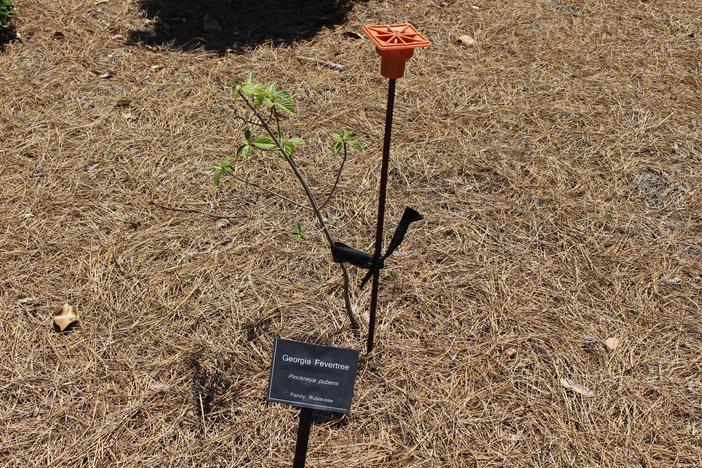Fevertree
(Pinckneya pubens)
Fevertree (Pinckneya pubens)
/
/

Michael Rivera
CC BY-SA 4.0
Image By:
Michael Rivera
Recorded By:
Copyright:
CC BY-SA 4.0
Copyright Notice:
Photo by: Michael Rivera | License Type: CC BY-SA 4.0 | License URL: https://creativecommons.org/licenses/by-sa/4.0 | Uploader: Mjrmtg | Publisher: Wikipedia Commons




























Estimated Native Range
Summary
Pinckneya pubens, commonly known as Fevertree, is a deciduous shrub or small tree native to the moist woodlands, swamps, and along stream banks in the Southeastern United States. It typically grows to a height of 10-30 feet (3-9.1 meters) and a width of 12-18 feet (3.7-5.5 meters). Fevertree is notable for its large, showy bracts that surround the true flowers, which are small and yellowish-green. The bracts are initially pale green and turn to various shades of pink and white as they mature. The flowering season spans late spring to early summer, and the plant is particularly showy during this time.
Fevertree is valued for its striking floral display and is used in cultivation for naturalistic plantings and as a specimen in large gardens. It thrives in acidic, well-drained soils but can adapt to a range of soil textures, from fine to coarse. While it prefers full sun, it can tolerate partial shade. Gardeners should provide Fevertree with medium amounts of water and ensure occasional irrigation during dry periods. It is generally pest-resistant, but root rot can occur in poorly drained soils.CC BY-SA 4.0
Fevertree is valued for its striking floral display and is used in cultivation for naturalistic plantings and as a specimen in large gardens. It thrives in acidic, well-drained soils but can adapt to a range of soil textures, from fine to coarse. While it prefers full sun, it can tolerate partial shade. Gardeners should provide Fevertree with medium amounts of water and ensure occasional irrigation during dry periods. It is generally pest-resistant, but root rot can occur in poorly drained soils.CC BY-SA 4.0
Plant Description
- Plant Type: Shrub, Tree
- Height: 10-30 feet
- Width: 12-18 feet
- Growth Rate: Moderate
- Flower Color: Pink, White
- Flowering Season: Spring, Summer
- Leaf Retention: Deciduous
Growth Requirements
- Sun: Full Sun
- Water: Medium
- Drainage: Fast, Medium, Slow
Common Uses
Bee Garden, Bird Garden, Border Plant, Butterfly Garden, Low Maintenance, Showy Flowers
Natural Habitat
Moist woodlands, swamps, and along stream banks in the Southeastern United States
Other Names
Common Names: Georgia Bark , Georgia Fevertree
Scientific Names: Pinckneya bracteata , Pinckneya pubens , Pinckneya pubescens , Bignonia bracteata , Cinchona caroliniana , Cinchona pubens , Pinknea pubescens
GBIF Accepted Name: Pinckneya pubens Michx.